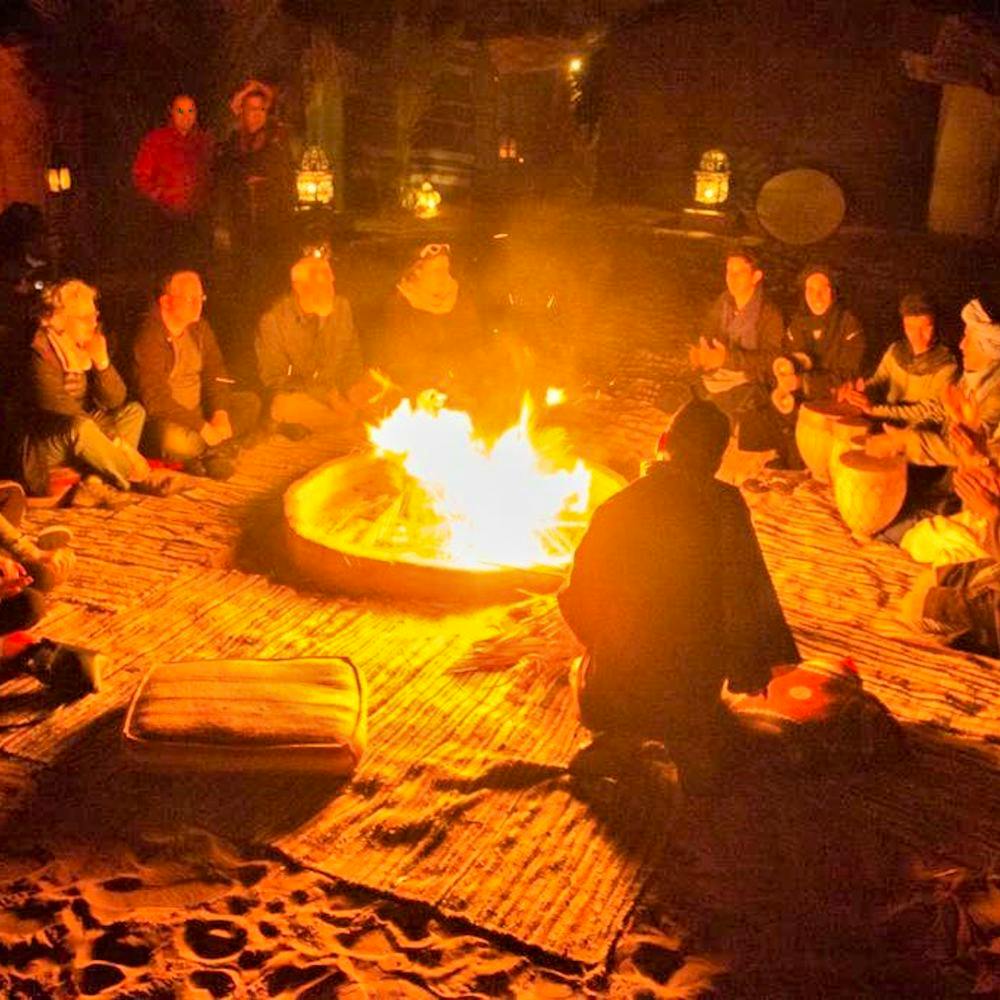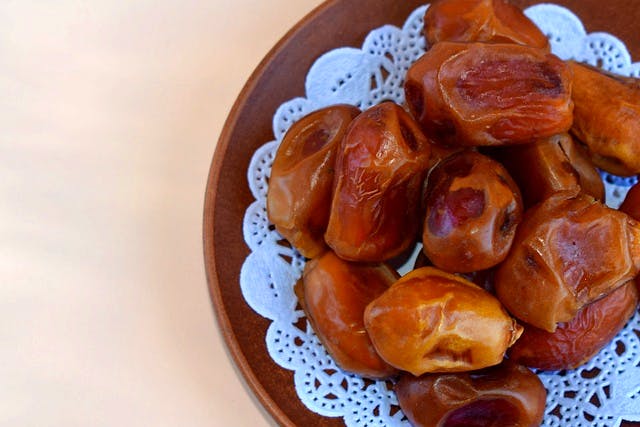Plan Your Perfect Trip: The Best Time to Visit Morocco Desert
Deciding on the best time to visit Morocco’s desert is an important decision and 'When should I go?' is one of the most common questions we get at Skyhook. From the sweltering heat of summer to the chilly nights of winter, each season offers a unique experience.
Your own personal comfort levels in different temperature extremes will help you decide on the best time of year to travel to Morocco and venture into the desert.
Let’s help you navigate the different seasons and how that impacts specific activities. This will help you choose the ideal time to book your Sahara desert trek.
When Is The Best Time to Visit The Morocco Desert?
Spring (March to May) and Autumn (September- November) are generally the best time to spend time or take on Morocco desert treks. Understanding the impact of seasons is crucial when planning your trip. Each season offers its own set of adventures and challenges.
Spring (March to May)

From March to May, spring is often hailed as one of the best times to explore the Sahara Desert.
The Morocco desert weather is mild, with daytime temperatures ranging from 22°C to 28°C (72°F to 82°F), making it comfortable for outdoor activities. Nights are cooler but not as freezing as in the winter months, averaging around 10°C to 15°C (50°F to 59°F).
The desert comes alive with blooming flora in the desert oases, offering a colourful backdrop to your adventure.
The mild temperatures and clear skies make it an ideal time for camel trekking. Imagine riding a camel through the dunes as the setting sun paints the sky in shades of orange and pink—truly a once-in-a-lifetime experience!
Stargazing is another activity that’s particularly enchanting during the spring months. The clear skies offer an unobstructed view of the cosmos, making it a paradise for astronomy enthusiasts or romantic souls looking to wish upon a star.
Summer (June to August)

Summer in the Sahara, from June to August, is not for the faint of heart. Temperatures can soar up to 45°C (113°F) during the day, making it a challenging time for those not accustomed to extreme heat—even nighttime offers little respite, with lows hovering around 30°C (86°F).
Given the scorching conditions, traditional daytime activities like camel trekking may not be the best idea. However, the desert is a land of extremes, including its beauty.
Early morning and late evening excursions offer a workaround for the heat. Imagine watching the sunrise paint the dunes in golden hues or taking a late-evening camel ride under a sky ablaze with stars. These are experiences that can make a summer visit worthwhile.
If you’re a photographer, the harsh sunlight can create dramatic shadows on the dunes, offering unique photo opportunities you won’t find in other seasons. Stay hydrated and take all necessary precautions to protect yourself from the sun.
Autumn (September to November)

As the scorching heat of summer gives way to the milder temperatures of autumn, September to November becomes a sweet spot for visiting the Sahara. Daytime temperatures range from a comfortable 25°C to 30°C (77°F to 86°F). At the same time, the night in the Sahara desert, Morocco is cooler but manageable at around 15°C to 20°C (59°F to 68°F).
One of the perks of visiting in autumn is the reduced crowds. With fewer tourists around, you’ll have a more intimate experience of the desert’s grandeur. This is an excellent time for activities like dune bashing, where you can race up and down the dunes in a 4x4 vehicle. The adrenaline rush is real, and the experience is heightened by the fact that you often have the dunes all to yourself!
Photography enthusiasts will find autumn lighting to be particularly flattering. The softer sunlight creates a warm glow on the sand, making for some Instagram-worthy shots.
Whether capturing the landscape’s vastness or focusing on intricate patterns in the sand, the photo opportunities are endless.

Latest Deals
Winter (December to February)

Winter, stretching from December to February, brings different magic to the Sahara.
While daytime temperatures are relatively mild, ranging from 18°C to 24°C (64°F to 75°F), nights can get quite chilly, dropping to as low as 5°C (41°F). So, if you’re planning a winter visit, packing layers is a must.
The colder temperatures make this season ideal for cultural tours. Many local communities offer guided tours that delve into the history, traditions, and daily life of the Sahara’s inhabitants.
It’s a fantastic opportunity to gain a deeper understanding of the desert beyond its scenic beauty.
Desert camping is another activity that shines in winter. Imagine sitting around a campfire, sipping Moroccan mint tea, and sharing stories under a starlit sky. The cold nights make the warmth of the fire and the company all the more special.
Pro tip: Know what to wear in the Sahara desert, Morocco. Proper clothing will make your desert experience unforgettable and can fight off those chilly nights.
Popular Activities and Their Best Times
When it comes to the Sahara, the range of activities is as vast as the desert itself. However, timing is everything. Here are some of our favourite activities and the best times to enjoy them:

Camel Trekking
The best times to embark on a camel trekking in the Morocco desert are spring and autumn. These seasons offer mild temperatures, ensuring a comfortable ride through the expansive dunes.
In spring, the desert bursts into life with blooming flora, adding a splash of colour to your journey. Alternatively, autumn provides a sense of solitude and peace, allowing you to immerse yourself in the desert’s natural beauty fully.
Sandboarding
For thrill-seekers looking to try sandboarding in the Sahara, the ideal times to visit are autumn and winter.
The cooler weather during these seasons ensures that the sand isn’t unbearably hot, allowing for a more enjoyable experience as you glide down the dunes. Whether you’re a seasoned boarder or a first-timer, the milder temperatures make it easier to focus on the excitement of the ride.
Photography
For photography enthusiasts, the Sahara Desert offers a visual feast, especially during the autumn and spring. The softer light during these seasons acts as a natural filter, enhancing the quality of your photos.
Whether you’re capturing the vibrant blooming flora in spring or the mesmerising golden hues of autumn, these are the seasons to pack your camera and capture the desert’s beauty in all its glory.
Pro Tip: Early morning and late afternoon provide the best lighting conditions and are great for capturing photos of some rare Morocco desert animals.
Cultural Tours
For those interested in diving deeper into the rich cultural tapestry of the Sahara, winter is the best time for cultural tours. The cooler temperatures make exploring local communities and interacting with residents comfortable, offering a more intimate and authentic experience.
Plus, the quieter tourist season means you’ll likely have a more personalised journey, allowing you to immerse yourself in the local culture truly.
Pro Tip: Always respect local customs and traditions, especially when visiting religious sites.
Local Events and Festivals

When planning your trip to the Sahara, it’s worth considering the local events and festivals that might coincide with your visit. If you are in the city at the time, joining festivities can be amongst the most fun things to do in Marrakech. These cultural experiences can add a unique layer to your desert adventure.
Ramadan
Ramadan, the Islamic holy month of fasting, varies yearly based on the lunar calendar. During this period, Muslims abstain from eating, drinking, and other physical needs from dawn to sunset.
While this means you’ll find altered operating hours for many local businesses and attractions, the evenings come alive with Iftar celebrations, where families and communities break their fast together. It’s a spiritually enriching time to visit, but respecting the local customs is essential.
Pro Tip: Be respectful of the fasting period and avoid eating, drinking, or smoking in public during daylight hours.
Mawazine Festival

Usually held in June, the Mawazine Festival in Rabat is a musical extravaganza featuring local and international artists.
Although the festival isn’t in the desert, it could be a fantastic addition to your Moroccan itinerary. The event offers a lively atmosphere and a chance to experience Morocco’s contemporary culture, making it worth the detour.
Erfoud Date Festival

Taking place in October, the Erfoud Date Festival is a celebration of the annual date harvest. Located close to the Sahara, the festival features music, dancing, and, naturally, an abundance of dates. It’s a vibrant event that offers a unique insight into local traditions and is a great way to interact with the community.
Imilchil Marriage Festival

Held in September, the Imilchil Marriage Festival is a unique cultural event in the Atlas Mountains. During the festival, young men and women from local Berber tribes come together to find a spouse.
Although not directly in the Sahara, the festival is culturally significant and offers a fascinating glimpse into Berber traditions. It could be an intriguing detour for those interested in the rich tapestry of Moroccan culture.
Pro Tip: Always ask for permission before taking photographs, especially of people.
Conclusion
Choosing the right time for your Morocco adventure can elevate your Sahara experience from memorable to unforgettable.
Whether you’re an adrenaline junkie, a photography enthusiast, or a cultural explorer, each season offers unique opportunities to delve deeper into the desert’s mystique.
Find your next adventure
Why Skyhook?
Join over 27,000 Skyhook adventurers who've used our platform to book directly with our vetted local guides, at local prices (we never markup).
Expert Local Guides
Experienced local guides, handpicked by us.
Best Prices
Never pay a markup on the local guide's price.
Exclusive Club
Earn loyalty rewards every time you travel.
Great Social Vibes
Small group tours provide a richer experience.
Stellar Feedback
Over 2,800 reviews, average of 4.9/5 stars.












